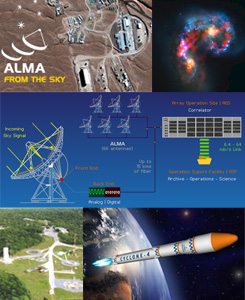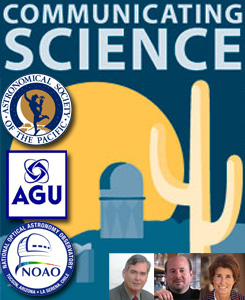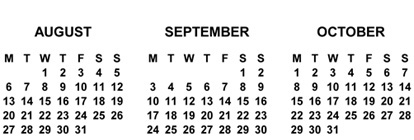South America and the Space Age: Chile Leading Astrophysics, Brazil Reigniting Astronautics
 Chile continues to maintain a position at the leading edge of Astronomy, hosting 42% of current global astronomy infrastructure, a figure projected to rise to 70% by 2018. The high and dry 181,300-square kilometer Atacama Desert region is home to some of the latest developments including the Atacama Large Millimeter/sub-millimeter Array currently being constructed at 5000 meters above sea level in the Chajnantor plateau. ALMA, due for completion in March 2013, will consist of 66 12-meter and 7-meter radio telescopes coordinating observations with one millionth of a millionth of a second precision while operating at wavelengths of 0.3 to 9.6 mm to study star birth during the early universe and conduct detailed imaging of local star and planet formation. Brazil is working to reignite its astronautics programs / indigenous launch capabilities based around the Alcantara Launch Center, which benefits from an equatorial locale at just 2.3 degrees south longitude, ideal for launching to geostationary orbit. Recent resumption of a Brazil – Ukraine joint venture is building towards the launch of a Ukrainian Cyclone-4 rocket from Alcantara in 2013. (Image Credit: ALMA, Top Right: Antennae Galaxy – ALMA-Hubble Composite, Obozrevatel, LMA)
Chile continues to maintain a position at the leading edge of Astronomy, hosting 42% of current global astronomy infrastructure, a figure projected to rise to 70% by 2018. The high and dry 181,300-square kilometer Atacama Desert region is home to some of the latest developments including the Atacama Large Millimeter/sub-millimeter Array currently being constructed at 5000 meters above sea level in the Chajnantor plateau. ALMA, due for completion in March 2013, will consist of 66 12-meter and 7-meter radio telescopes coordinating observations with one millionth of a millionth of a second precision while operating at wavelengths of 0.3 to 9.6 mm to study star birth during the early universe and conduct detailed imaging of local star and planet formation. Brazil is working to reignite its astronautics programs / indigenous launch capabilities based around the Alcantara Launch Center, which benefits from an equatorial locale at just 2.3 degrees south longitude, ideal for launching to geostationary orbit. Recent resumption of a Brazil – Ukraine joint venture is building towards the launch of a Ukrainian Cyclone-4 rocket from Alcantara in 2013. (Image Credit: ALMA, Top Right: Antennae Galaxy – ALMA-Hubble Composite, Obozrevatel, LMA)
ASP Conference on Education and Public Outreach Promotes Science Literacy to Solve Critical Global Challenges
 How do we raise the rational voice of science above the pervasive din of distractors, detractors, skeptics, deep-pocketed influencers and new media pundits? This is the central question addressed at the Astronomical Society of the Pacific (ASP) national conference on “Communicating Science,” held from August 4-8 in Tucson AZ. The ASP is the largest general astronomy society in the world, with members from over 70 nations. Partnering with the ASP are the American Geological Union, the world’s largest organization of Earth and space scientists, with 61,000 members around the globe and the National Optical Astronomy Observatory, the U.S. national observatory for ground-based nighttime astronomy. Scientists, NASA- and NSF-funded Education and Public Outreach program professionals, K-12 teachers, university educators and science writers will participate in the conference, with attendees invited to consider how best to share the results of their work with each other and the public. Much of the conference will consist of hands-on sessions focused on practicing effective techniques for sharing and discussing scientific work. Featured speakers to include prize-winning science journalist Charles Petit, Nobel Laureate and global climate change research pioneer Michael Mann and Sheila Tobias, author of Science Teaching as a Profession: Why it Isn’t and How it Could Be. (Image Credit: ASP, AGU, NOAO)
How do we raise the rational voice of science above the pervasive din of distractors, detractors, skeptics, deep-pocketed influencers and new media pundits? This is the central question addressed at the Astronomical Society of the Pacific (ASP) national conference on “Communicating Science,” held from August 4-8 in Tucson AZ. The ASP is the largest general astronomy society in the world, with members from over 70 nations. Partnering with the ASP are the American Geological Union, the world’s largest organization of Earth and space scientists, with 61,000 members around the globe and the National Optical Astronomy Observatory, the U.S. national observatory for ground-based nighttime astronomy. Scientists, NASA- and NSF-funded Education and Public Outreach program professionals, K-12 teachers, university educators and science writers will participate in the conference, with attendees invited to consider how best to share the results of their work with each other and the public. Much of the conference will consist of hands-on sessions focused on practicing effective techniques for sharing and discussing scientific work. Featured speakers to include prize-winning science journalist Charles Petit, Nobel Laureate and global climate change research pioneer Michael Mann and Sheila Tobias, author of Science Teaching as a Profession: Why it Isn’t and How it Could Be. (Image Credit: ASP, AGU, NOAO)

![]() = All times for terrestrial events in local time unless noted.
= All times for terrestrial events in local time unless noted.
![]() = All times for international terrestrial events in local time unless noted.
= All times for international terrestrial events in local time unless noted.
![]() = All times for space events, and…
= All times for space events, and…
![]() = All times for international space / astro events in Hawaii Standard Time unless noted. Add 10 hours to obtain UT (‘Universal Time;’ Greenwich, England).
= All times for international space / astro events in Hawaii Standard Time unless noted. Add 10 hours to obtain UT (‘Universal Time;’ Greenwich, England).
Weekly Planet Watch – Evening Planets: Mars (WSW), Saturn (WSW). Morning Planets: Venus (E), Jupiter (E).
MONDAY
![]() Aug 6 — ISS, LEO: ISS crew to attach more than 453 kg of cargo from Kounotori-3’s Unpressurized Logistics Carrier to experiment platform at end of Kibo module.
Aug 6 — ISS, LEO: ISS crew to attach more than 453 kg of cargo from Kounotori-3’s Unpressurized Logistics Carrier to experiment platform at end of Kibo module.
![]() Aug 6 — Curiosity, Red Planet: Assuming Mars Science Laboratory landing went according to plans, rover should be performing initial health checkouts to begin its one Martian year mission.
Aug 6 — Curiosity, Red Planet: Assuming Mars Science Laboratory landing went according to plans, rover should be performing initial health checkouts to begin its one Martian year mission.
![]() Aug 6 — Juno, Jupiter Trajectory: Operating nominally with 4 instruments turned on, Juno is approximately 488 million km from Earth, traveling at velocity of 161,900 km/h.
Aug 6 — Juno, Jupiter Trajectory: Operating nominally with 4 instruments turned on, Juno is approximately 488 million km from Earth, traveling at velocity of 161,900 km/h.
![]() Aug 6 — RSA, Launch Proton / Telkom 3 & Express MD2, Baikonur Cosmodrome, Kazakhstan: Telkom 3 to provide communications services over Indonesia; Express MD2 to provide secure communications for Russian government, digital broadcasting and Internet services.
Aug 6 — RSA, Launch Proton / Telkom 3 & Express MD2, Baikonur Cosmodrome, Kazakhstan: Telkom 3 to provide communications services over Indonesia; Express MD2 to provide secure communications for Russian government, digital broadcasting and Internet services.
![]() Aug 6 — NASA Research Park at Moffett Field, Mountain View CA: ‘The Silicon Valley Tech Festival at NASA Ames.’
Aug 6 — NASA Research Park at Moffett Field, Mountain View CA: ‘The Silicon Valley Tech Festival at NASA Ames.’
![]() Aug 6-7 — The National Academies, Arnold and Mabel Beckman Center, Irvine CA: ‘NASA’s Strategic Direction.’
Aug 6-7 — The National Academies, Arnold and Mabel Beckman Center, Irvine CA: ‘NASA’s Strategic Direction.’
![]() Aug 6-10 — Center for Planetary Science (CPS), Kobe, Japan: ‘The 5th Meeting on Cosmic Dust.’
Aug 6-10 — Center for Planetary Science (CPS), Kobe, Japan: ‘The 5th Meeting on Cosmic Dust.’
![]() Aug 6-10 — Chinese Academy of Sciences, Beijing, China: ‘International Workshop on Mars and the Moon: Changing Perspectives and New Questions.’
Aug 6-10 — Chinese Academy of Sciences, Beijing, China: ‘International Workshop on Mars and the Moon: Changing Perspectives and New Questions.’
![]() Aug 6 — Northern Iota Aquarids Meteor Shower Peak: Appearing to radiate from constellation Aquarius, shower produces 5-10 meteors per hour.
Aug 6 — Northern Iota Aquarids Meteor Shower Peak: Appearing to radiate from constellation Aquarius, shower produces 5-10 meteors per hour.
![]() Aug 6 — Asteroid 2006 EC: Near-Earth Flyby (0.093 AU).
Aug 6 — Asteroid 2006 EC: Near-Earth Flyby (0.093 AU).
Continued from…
![]() Aug 4-8 — Astronomical Society of the Pacific, American Geological Union, Tucson AZ: ‘Communicating Science: A National Conference on Science Education and Public Outreach.’
Aug 4-8 — Astronomical Society of the Pacific, American Geological Union, Tucson AZ: ‘Communicating Science: A National Conference on Science Education and Public Outreach.’
![]() Aug 4-14 — Brazil National Council for Scientific and Technological Development, Carlos Chagas Filho de Amparo Research Foundation of the State of Rio de Janeiro, Rio de Janeiro, Brazil: ‘The International Olympiad on Astronomy and Astrophysics.’
Aug 4-14 — Brazil National Council for Scientific and Technological Development, Carlos Chagas Filho de Amparo Research Foundation of the State of Rio de Janeiro, Rio de Janeiro, Brazil: ‘The International Olympiad on Astronomy and Astrophysics.’
![]() Aug 5-10 — Australian National University, Swinburne University of Technology, Macquarie University, Cairns, Australia: ‘XII International Symposium on Nuclei in the Cosmos.’
Aug 5-10 — Australian National University, Swinburne University of Technology, Macquarie University, Cairns, Australia: ‘XII International Symposium on Nuclei in the Cosmos.’
TUESDAY
![]() Aug 7 — California State Capitol Building, Sacramento CA: ‘AIAA California Aerospace Day.’
Aug 7 — California State Capitol Building, Sacramento CA: ‘AIAA California Aerospace Day.’
![]() Aug 7 — Asteroid 2006 MV1: Near-Earth Flyby (0.061 AU).
Aug 7 — Asteroid 2006 MV1: Near-Earth Flyby (0.061 AU).
![]() Aug 7 — Saturn: 4.5° NNE of Spica; 04:00.
Aug 7 — Saturn: 4.5° NNE of Spica; 04:00.
WEDNESDAY
![]() Aug 8 — SETI Institute, Mountain View CA: Colloquium: ‘Using the topography of icy satellites to understand their internal structure and thermal history,’ presented by Noah Hammond, SETI Institute.
Aug 8 — SETI Institute, Mountain View CA: Colloquium: ‘Using the topography of icy satellites to understand their internal structure and thermal history,’ presented by Noah Hammond, SETI Institute.
![]() Aug 8 — Cassini, Saturn Orbit: Performing orbital trim maneuver #330.
Aug 8 — Cassini, Saturn Orbit: Performing orbital trim maneuver #330.
THURSDAY
![]() Aug 9 — Asteroid 2009 BW2: Near-Earth Flyby (0.034 AU).
Aug 9 — Asteroid 2009 BW2: Near-Earth Flyby (0.034 AU).
![]() Aug 9 — Asteroid 2009 SC56: Near-Earth Flyby (0.081 AU).
Aug 9 — Asteroid 2009 SC56: Near-Earth Flyby (0.081 AU).
FRIDAY
![]() Aug 10 — Sunset Crater Volcano National Monument, Flagstaff AZ: ‘Sunset Crater Volcano Star Party.’
Aug 10 — Sunset Crater Volcano National Monument, Flagstaff AZ: ‘Sunset Crater Volcano Star Party.’
![]() Aug 10 — Moon: 3.9° SSE of Pleiades; 11:00.
Aug 10 — Moon: 3.9° SSE of Pleiades; 11:00.
![]() Aug 10 — Mercury: 12.5° SSE of Pollux; 12:00.
Aug 10 — Mercury: 12.5° SSE of Pollux; 12:00.
SATURDAY
![]() Aug 11-19 — Mount Kobau Astronomical Society, Osoyoos, BC, Canada: ‘29th Annual Mt. Kobau Star Party.’
Aug 11-19 — Mount Kobau Astronomical Society, Osoyoos, BC, Canada: ‘29th Annual Mt. Kobau Star Party.’
![]() Aug 11 — Moon: 4.8° N of Aldebaran, 09:00; 0.68° E of Jupiter, 12:00.
Aug 11 — Moon: 4.8° N of Aldebaran, 09:00; 0.68° E of Jupiter, 12:00.
SUNDAY
![]() Aug 12 — RSA, Launch Proton / Intelsat 23, Baikonur Cosmodrome, Kazakhstan: ILS Proton rocket with Breeze M upper stage will deploy Intelsat 23 satellite to provide enhanced communications services over the Americas, Europe and Africa.
Aug 12 — RSA, Launch Proton / Intelsat 23, Baikonur Cosmodrome, Kazakhstan: ILS Proton rocket with Breeze M upper stage will deploy Intelsat 23 satellite to provide enhanced communications services over the Americas, Europe and Africa.
![]() Aug 12-17 — The Meteoritical Society, Australian National University, Cairns, Australia: ‘75th Annual Meeting of the Meteoritical Society.’
Aug 12-17 — The Meteoritical Society, Australian National University, Cairns, Australia: ‘75th Annual Meeting of the Meteoritical Society.’
![]() Aug 12 — Cassini, Saturn Orbit: Performing distant flyby of Telesto.
Aug 12 — Cassini, Saturn Orbit: Performing distant flyby of Telesto.
![]() Aug 12 — Asteroid 37655 Illapa: Near-Earth Flyby (0.095 AU).
Aug 12 — Asteroid 37655 Illapa: Near-Earth Flyby (0.095 AU).
![]() Aug 12 — Epsilon Perseid Meteor Shower Peak: Appearing to radiate from constellation Perseus, showers produce 50-80 meteors per hour, visible in NE skies.
Aug 12 — Epsilon Perseid Meteor Shower Peak: Appearing to radiate from constellation Perseus, showers produce 50-80 meteors per hour, visible in NE skies.